|
|
|
Sort Order |
|
|
|
Items / Page
|
|
|
|
|
|
|
| Srl | Item |
| 1 |
ID:
128146
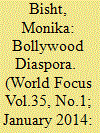

|
|
|
|
|
| Publication |
2014.
|
| Summary/Abstract |
The liberalization and the forces of globalization enhance the employment options, expansion of service sector and demand of skills across the borders. With this liberalization of the economy, a growing number of NRIs primarily from the United States and United Kingdom have also begun investing in their cultural homeland (Pulkit Datta: 2008). The aspiration of better lives and employment opportunities expanded the size of middle class abroad during 1990s, the terms "Non Resident Indian" emerged for the Indian who is living abroad. This is why; this period can be considered as the Golden Age of the NRI, which resulted the emerging middle class and the new material aspirations of an India in the midst of economic liberalization (Ingrid Thewath:2010).
|
|
|
|
|
|
|
|
|
|
|
|
|
|
|
|
| 2 |
ID:
101851
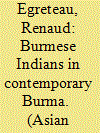

|
|
|
|
|
| Publication |
2011.
|
| Summary/Abstract |
This article seeks to explore the current role, significance and influence of Burmese Indian minorities in post-1988 Burma as well as the perceptions the Burmese indigenous society and elite have developed on them since the colonial era. British Burma (1826-1948) witnessed a massive immigration of Indian communities that disproportionately dominated Burma's colonial enterprise. A strong resentment thus arose among the Burman Buddhist majority, illustrated by the rise of a popular 'indophobia' phenomenon. Paroxysmal expressions of the colonial original trauma were observed through recurrent pre-independence anti-Indian riots as well as a specific and enduring linguistic patronizing classification of the 'Kalas' by the Burmese language. Nationalistic administrative laws, enacted by the Burmese post-independence parliamentarian and military governments, furthered the downgrading and discrimination of Burmese Indians who remain however a visible minority today, with a manifest economic weight and a strong socio-cultural presence throughout Burma. In this paper, it will, however, be argued that after years of 'Burmanization' processes, Burmese old-age 'indophobic' sentiments have turned towards more 'islamophobic' tendencies, now explicitly targeting the Muslim communities of Indian origin, but that it remains difficult to evaluate their impact on Burma's current policymaking.
|
|
|
|
|
|
|
|
|
|
|
|
|
|
|
|
| 3 |
ID:
128206
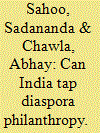

|
|
|
|
|
| Publication |
2014.
|
| Summary/Abstract |
International migration and diaspora has been one of the integral parts of the recent development discourse in academics as well as the policy domain, especially in the context of developing countries. Diaspora is seen as one of the emerging development actors as diaspora is perceived as creating economic, social and political capital through global network (Gaillard 1991, Meyer Brown 1999). Multilateral organizations have taken note of the significance of diasporic contribution towards the global development.
|
|
|
|
|
|
|
|
|
|
|
|
|
|
|
|
| 4 |
ID:
160498
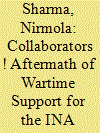

|
|
|
|
|
| Summary/Abstract |
This article discusses the plight of the Indian community in China after the World War II. During the World War II, a sizeable number of Indian immigrants in China had been mobilised under the banner of the Indian National Army (INA), which was fighting for freedom from British colonial rule in alliance with Japan. This article seeks to understand the complex problems faced by the Indians in China in the aftermath of the War both because of the general dislocation they had suffered on account of war and occupation, and also because of their active or passive participation in a movement seen as ‘collaborationist’. It looks at how, for the British, Chinese and even Indian authorities, the issue of their status as ‘collaborators’ coloured the humanitarian issue of providing relief to a severely afflicted community. It also attempts to show how the wartime political activities of Indians in China not only had immediate consequences for them but also in some cases had an afterlife, which lasted for quite a few years after the War.
|
|
|
|
|
|
|
|
|
|
|
|
|
|
|
|
| 5 |
ID:
084704
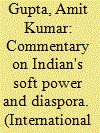

|
|
|
| 6 |
ID:
075594
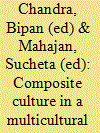

|
|
|
|
|
| Publication |
DelhI, Pearson Education, 2007.
|
| Description |
xix, 286p.
|
| Standard Number |
8131706281
|
|
|
|
|
|
|
|
|
|
|
|
Copies: C:1/I:0,R:0,Q:0
Circulation
| Accession# | Call# | Current Location | Status | Policy | Location |
| 052065 | 305.800954/CHA 052065 | Main | On Shelf | General | |
|
|
|
|
| 7 |
ID:
120704
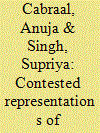

|
|
|
|
|
| Publication |
2013.
|
| Summary/Abstract |
This paper deals with the changing idea of money and the transnational Indian family across generations and life stages. It draws on a qualitative study of 38 first and second generation Indian migrants to Australia. For first generation migrants, sending money home is one of the important ways of expressing belonging and care for the transnational family. Over time, the remittances become contested in terms of their value and their equivalence to physical care, raising questions of belonging. With multiple migrants, the family centres on Australia, which now becomes the source country when children migrate elsewhere. Money and gifts are sent home to Australia or to other countries. The nuclear family is the main reference point for most of our second generation migrants, but there remain some gift exchanges with extended family and charitable donations. These donations reflect a sense of ancestry rather than the locus of family. Hence accounts of sending money to India need to be supplemented by studies of the diffusion of the transnational family across different nodes of the diaspora. The study of remittances has to reflect this diffusion and change in the transnational family if it is to adequately explain how money is the medium of family relationships.
|
|
|
|
|
|
|
|
|
|
|
|
|
|
|
|
| 8 |
ID:
114011
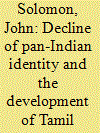

|
|
|
|
|
| Publication |
2012.
|
| Summary/Abstract |
This paper explores the rise and fall of pan-Indianism as the dominant identity narrative amongst the Indian diaspora in Singapore in the mid twentieth century, and its replacement with a normative Indian identity based primarily on Tamil culture. It will analyse some of the reasons why a Tamil cultural separatism came to dominate negotiations of ethnic identity in early post-war Singapore. This will include an examination of colonial ethnographic representations, the effects of demographic trends in Indian migration to Malaya during the colonial period, transnational political linkages between Singapore and India, and the effects of the Japanese occupation on Indian identity during World War II. The paper will also focus on the growth of the Tamil reform movement and the ways in which it came to shape the framing of Tamil ethnic identity in Singapore.
|
|
|
|
|
|
|
|
|
|
|
|
|
|
|
|
| 9 |
ID:
068360
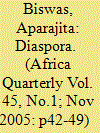

|
|
|
| 10 |
ID:
095460
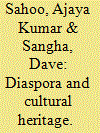

|
|
|
|
|
| Publication |
2010.
|
| Summary/Abstract |
The present paper examines the historical and contemporary context of Indian communities in Canada from a cultural heritage perspective and analyses the processes of migration, settlement and cultural identity. It also examines the challenges of developing museum exhibits which depict the Indian diaspora in Canada. Despite its colourful history and its growing size and prominence in Canadian society, the Indian diaspora has not been the subject of much interest by Canadian museums. While recognising the necessity of working with local communities and thereby reflecting local concerns, it is submitted that any museum exhibit attempting to portray the complex set of experiences of the Indian diaspora in Canada should include some portrayal of the highly marginalised position which the Indian community faced when it first established themselves in the early 1900s. In addition to this historical focus, any attempt to portray the contemporary Indian diaspora needs to portray its growing diversity and its efforts to maintain, and in many cases modify and 'hybridise', cultural practices. Such a display would also have to reflect the influence of transnational forces on the contemporary Indian diaspora. Ultimately, efforts by museums to develop exhibits reflecting the Indian presence in Canada will only further the aims of its widely praised state policy of multiculturalism.
|
|
|
|
|
|
|
|
|
|
|
|
|
|
|
|
| 11 |
ID:
126690
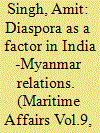

|
|
|
|
|
| Publication |
2013.
|
| Summary/Abstract |
Myanmar' is going through an unprecedented political and socio-cultural trans- formation. During the past five decades of military rule, the country witnessed supprasion of democratic norms/institutions, human rights violations, armed insurgencies by the sidelined ethnic minorities, detention of the opposition activists and leaders, especially the Nobel Peace laureate Ms Aung San Suu Kyi and the economic policies enforced by the junta, and left most of the common people impoverished, including the Indian Diaspora.
|
|
|
|
|
|
|
|
|
|
|
|
|
|
|
|
| 12 |
ID:
190742
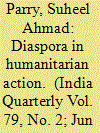

|
|
|
|
|
| Summary/Abstract |
Humanitarian action is commonly thought to involve two types of aid providers: international and local actors. But this tends to ignore a third humanitarian domain, namely transnational humanitarianism during conflicts, global epidemics and natural disasters by diaspora individuals and organisations. These transnational connections, which involve the mobility of people, goods and money, significantly change the context in which global humanitarian actors function and may have notable secondary effects on other aid providers. We contend that the significance of diaspora humanitarianism during natural disasters and the COVID-19 pandemic has still not been thoroughly explored in the academic literature and remains relatively ‘invisible’ in aid practices and policies. This article arises from an empirical study on the significance of diaspora in humanitarian action by analysing the impact of diaspora remittances and organisations that have emerged as an important potential for diasporas during humanitarian action. To examine the potential and role of the diaspora in humanitarian action, this article makes the case for the Indian diaspora’s humanitarian potential and efforts, particularly during the COVID-19 pandemic in India.
|
|
|
|
|
|
|
|
|
|
|
|
|
|
|
|
| 13 |
ID:
185951
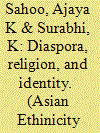

|
|
|
|
|
| Summary/Abstract |
Globalization associated with development in information and communication technologies ushered diasporas to play an important role in marketing the homeland culture globally. Among the many traditional Indian art forms that are getting visible transnationally today is the Theyyam. Theyyam is a traditional ritual art form of worship observed in the Kannur and Kasargod districts of Northern Kerala state in India. It is the folk God for North Malabaris which is accompanied by dance and other rituals. There are approximately four hundred varieties of Theyyams and several of them are performed in the diasporas. This article argues that when the Theyyam is performed transnationally, the true essence of the ritual art form changed compared to its performance in the original settings and thereby opens up for commodification. Ethnographic data for this study derives from in-depth interviews with Theyyam artists, informal conversations with Theyyam devotees and villagers besides observation of Theyyam performances.
|
|
|
|
|
|
|
|
|
|
|
|
|
|
|
|
| 14 |
ID:
051924
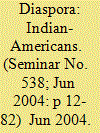

|
|
|
| 15 |
ID:
158581
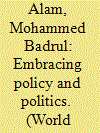

|
|
|
|
|
| Summary/Abstract |
Indians in America are characterised by their high educational and economic status, which on average places them above almost all other ethnic groups including the “white” majority. The Government of India has taken a number of measures to facilitate the involvement of overseas Indians in the nation’s economy and keep them connected with their native culture. Mohammed Badrul Alam reviews the size and role of the Indian community in the US and suggests measures to strengthen bonds with the mother country.
|
|
|
|
|
|
|
|
|
|
|
|
|
|
|
|
| 16 |
ID:
076168
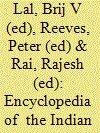

|
|
|
|
|
| Publication |
Singapore, National University of Singapore, 2006.
|
| Description |
416p.
|
| Standard Number |
9814155659
|
|
|
|
|
|
|
|
|
|
|
|
Copies: C:1/I:0,R:1,Q:0
Circulation
| Accession# | Call# | Current Location | Status | Policy | Location |
| 052250 | 030.0954/LAL 052250 | Main | On Shelf | Reference books | |
|
|
|
|
| 17 |
ID:
128199
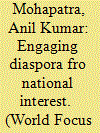

|
|
|
|
|
| Publication |
2014.
|
| Summary/Abstract |
The growing influence of diasporas on foreign affairs and the international behavior of the states has been a worldwide academic finding and a reported fact. As independent actors they have operated as lobbies which have actively influenced homeland (ancestral or kin-states) foreign policies and that of the host lands as well (Shain et al 2003). Especially the developing countries in their mission of development have tried to rope in their communities abroad in the process. This global phenomenon of diaspora-homeland linkage has debate on economic and political systems, national culture and international relations.
|
|
|
|
|
|
|
|
|
|
|
|
|
|
|
|
| 18 |
ID:
181180
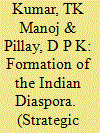

|
|
|
|
|
| Summary/Abstract |
The Indian Diaspora is one of the world’s largest overseas groupings.The Diaspora is considered India's 30th state with over 30 million overseas Indians. This article outlines the main strands of its formation, from the first movement of indentured workers and subsequent phases of migration of skilled professionals to the West and of workers to the Persian Gulf. They remain the single–largest contributor of foreign exchange and development in the country. Understanding its formation is an essential step for studying the Diaspora and engaging with it. This article aims to do that.
|
|
|
|
|
|
|
|
|
|
|
|
|
|
|
|
| 19 |
ID:
128114
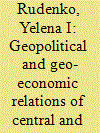

|
|
|
|
|
| Publication |
2013.
|
| Summary/Abstract |
According to many experts on ancient and Medieval history of contacts between Central and South Asian regions in previous centuries, including Janet Rizvi, "the trade from Mysore to Central Asia presented no difficulties". Obviously, not all trades who come to India from Central Asia alongwith their caravans reached coastal part of subcontinent, but rather chose as their final destination, the major cities of North India.
|
|
|
|
|
|
|
|
|
|
|
|
|
|
|
|
| 20 |
ID:
164377
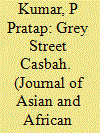

|
|
|
|
|
| Summary/Abstract |
In this paper, I wish to explore the life in the mid-19th to 20th century in the Durban-based Indian Casbah and its enduring legacy. In exploring the Casbah life in Durban, I wish to pay special attention to the narratives of the people who either were associated with it and had living memories of it, or remember the many stories passed on to them by their families.1 The central question that I explore in analysing these narratives is: does Casbah in the diaspora enable the diasporic community to reconnect with their Indian origins or does it orient them away from the romantic attachment to the places of their origin in India? In other words, is Casbah a symbol of a new settlement in which the diasporic community finds lasting meaning and legacy, or does it evoke memories and myths about their origins in India?
|
|
|
|
|
|
|
|
|
|
|
|
|
|
|
|
|
|
|
|
|